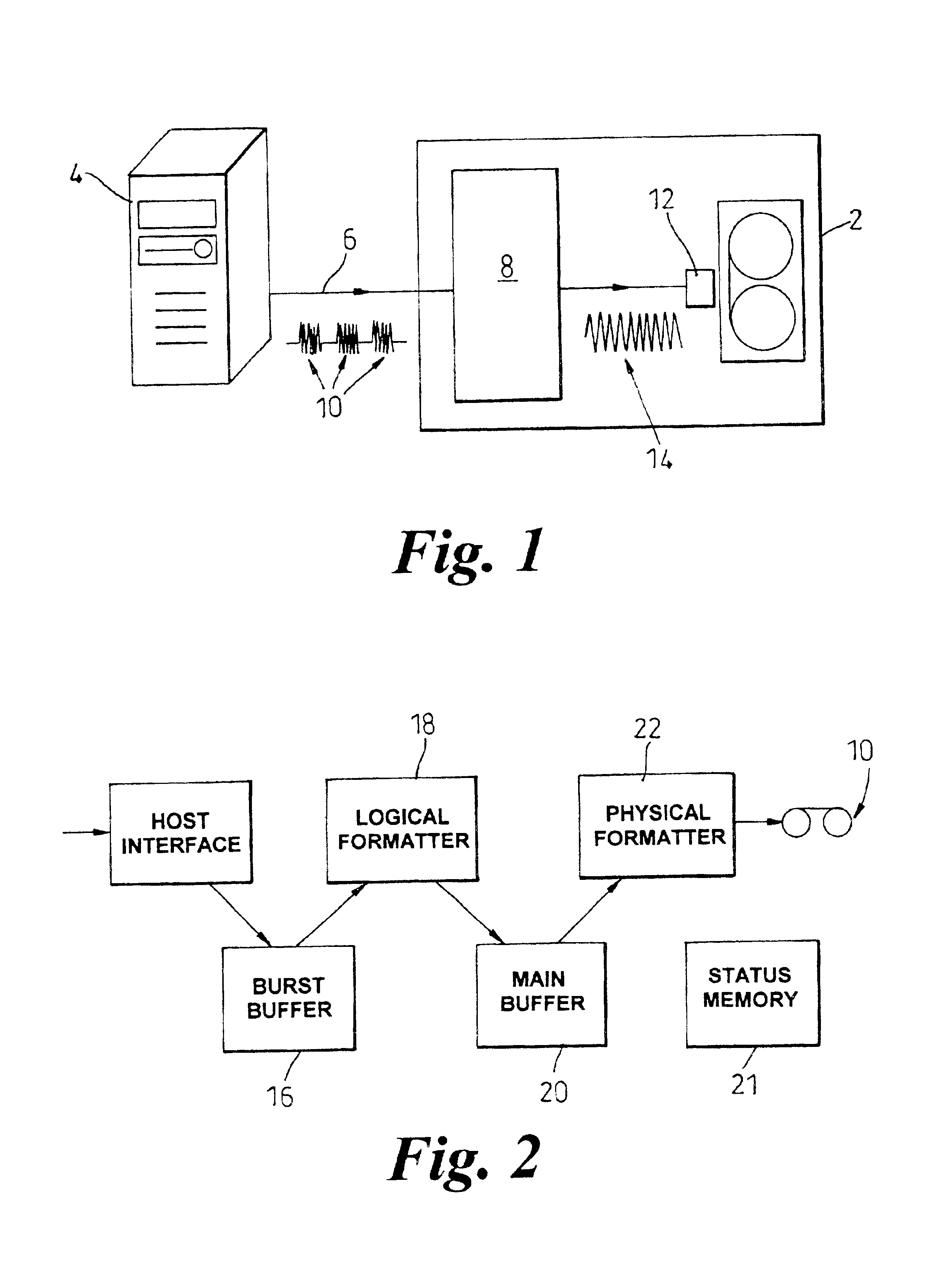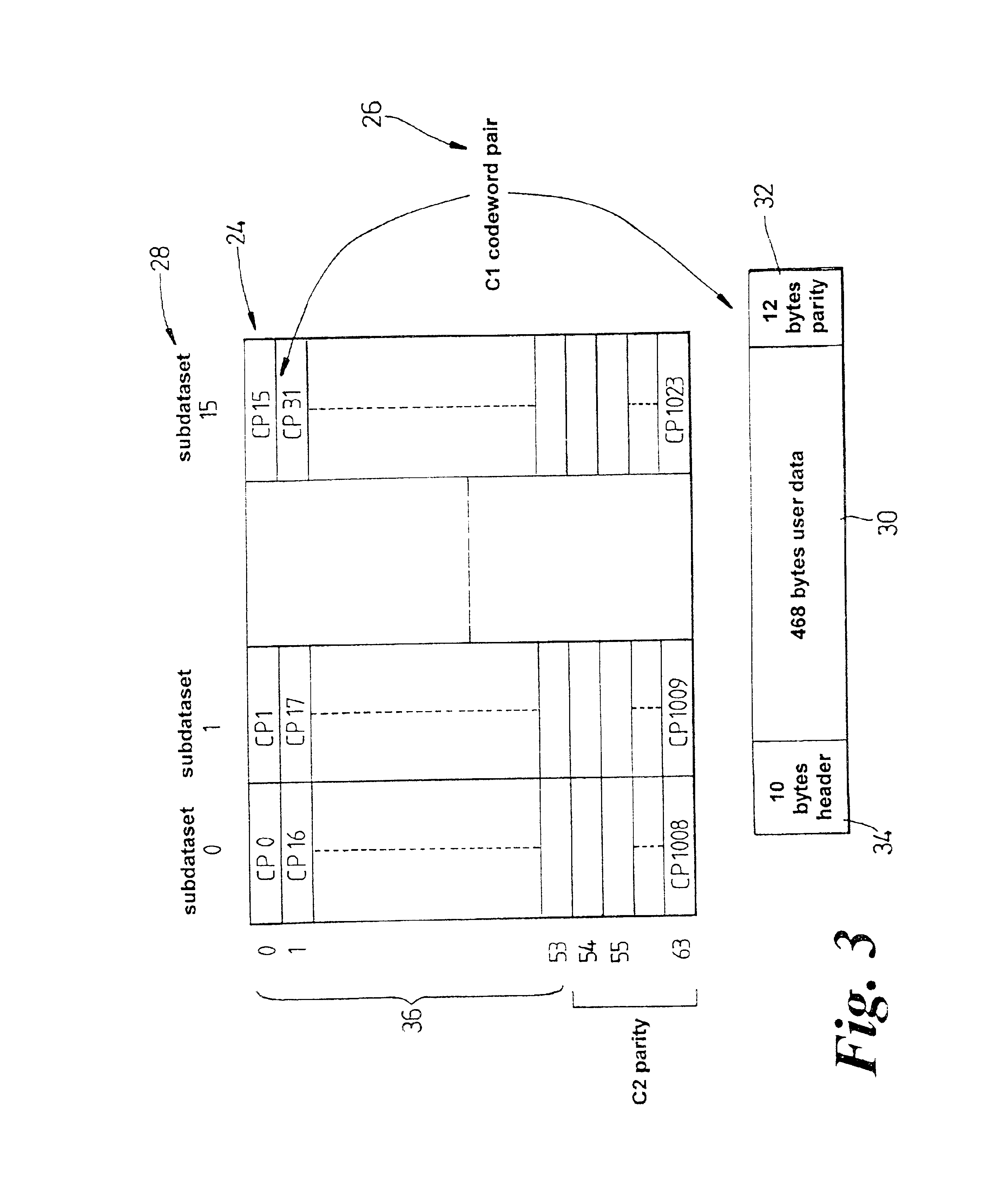Data storage
a data storage and data technology, applied in the field of data storage, can solve the problems of data being lost, data being overwritten, and data already in existence, and achieve the effect of less likely data loss and more robust approach
- Summary
- Abstract
- Description
- Claims
- Application Information
AI Technical Summary
Benefits of technology
Problems solved by technology
Method used
Image
Examples
Embodiment Construction
with reference to the accompanying Figures of which:
FIG. 1 is a schematic diagram of a computer connected to a tape drive according to the present invention;
FIG. 2 is a schematic diagram of the tape drive shown in FIG. 1, showing the main components thereof;
FIG. 3 shows the structure into which data received by the tape drive is arranged;
FIG. 4 shows further detail of the data structure of FIG. 3 and how the data contained therein is written to a tape;
FIG. 5 shows further detail of a portion of the data structure shown in FIGS. 3 and 4, and shows the physical arrangement of the dataset on the tape;
FIG. 6 shows how data is written on a tape inserted into the tape drive of FIG. 1;
FIG. 7 shows more detail of how data is written to tape;
FIG. 8 shows yet further detail of how data is written to the tape;
FIG. 9 shows how neighboring data blocks can be arranged on a tape, after read while write retries have occurred;
FIGS. 10 and 11 show further details of how the data blocks can be arrange...
PUM
| Property | Measurement | Unit |
|---|---|---|
| time | aaaaa | aaaaa |
| data structure | aaaaa | aaaaa |
| physical arrangement | aaaaa | aaaaa |
Abstract
Description
Claims
Application Information
 Login to View More
Login to View More - R&D
- Intellectual Property
- Life Sciences
- Materials
- Tech Scout
- Unparalleled Data Quality
- Higher Quality Content
- 60% Fewer Hallucinations
Browse by: Latest US Patents, China's latest patents, Technical Efficacy Thesaurus, Application Domain, Technology Topic, Popular Technical Reports.
© 2025 PatSnap. All rights reserved.Legal|Privacy policy|Modern Slavery Act Transparency Statement|Sitemap|About US| Contact US: help@patsnap.com



